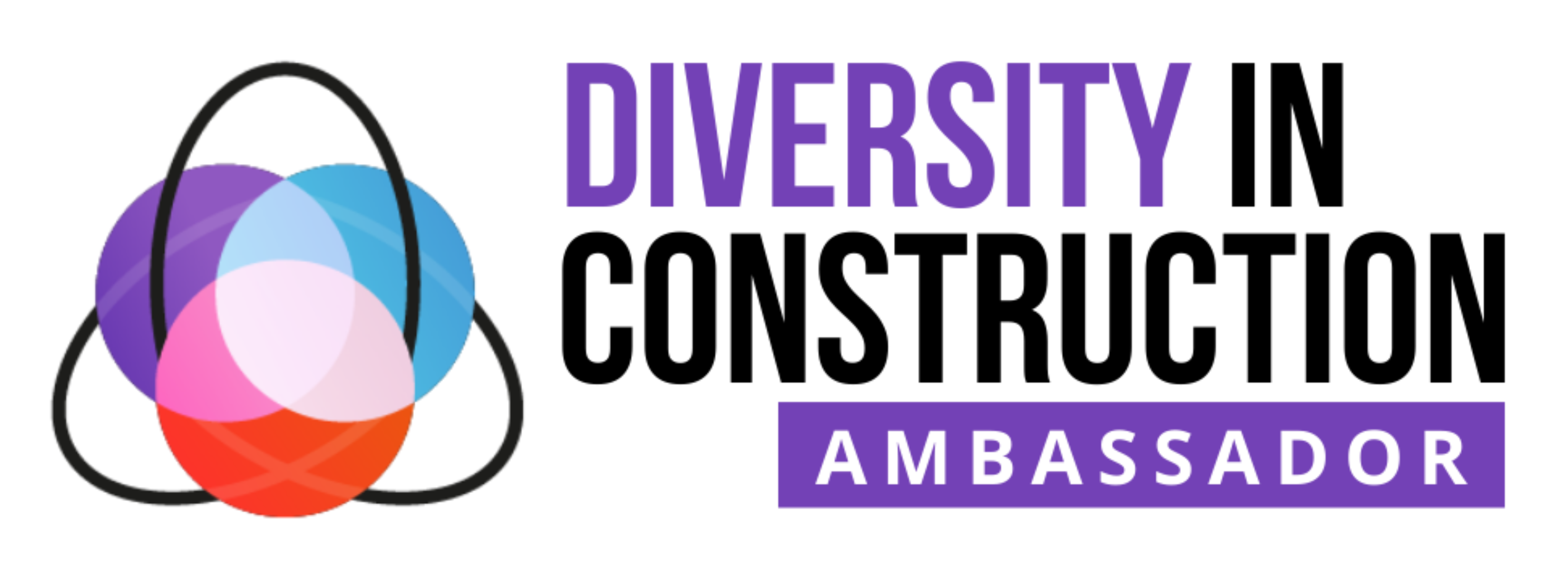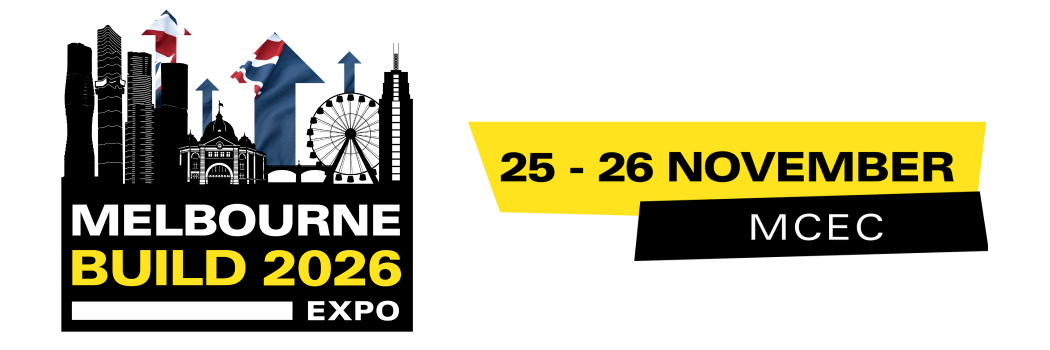Promoting Diversity in Construction: Advancing the Industry through a Diverse and Inclusive Workforce
)
A 2018 Australian Human Rights Commission report found that individuals of colour, constituting 21% of Australia's population, represented only 2.7% of leadership positions in corporate and public sector institutions. This disparity echoes profoundly within the construction sector, where the representation of diverse individuals in leadership positions remains a formidable challenge. Notably, in a sector where over half the workforce is foreign-born and half of the population being female, the underrepresentation of people of colour and women in management roles persists, with just 11% of managerial positions held by women.
In addition to underrepresentation in leading positions, as well as hands-on positions in the case of women in construction, only making up 2% of the workforce, another issue is prevalent - sexual and racial discrimination, harassment, and racial inequality within the construction sector. Promoting diversity in construction aims to create a workplace where everyone feels safe, respected, supported, and valued. A diverse workforce, with varied backgrounds and perspectives, will not only enhance and progress the industry but also address the primary challenge currently faced by Australia's construction sector: labour shortage.
What is DEI in Construction?
In the realm of construction, Diversity, Equity, and Inclusion (DEI) have emerged as pivotal concepts. These terms, encompassing diversity, equity, and inclusion, hold significant weight in shaping a more inclusive construction industry.
Diversity signifies the representation of various identities and differences, spanning aspects such as race, gender, age, ethnicity, sexual orientation, disabilities, and more. Within construction, diversity involves cultivating a workforce that mirrors the rich tapestry of our society.
Equity revolves around ensuring equitable treatment, access, and opportunities by identifying and dismantling barriers that have historically hindered the full engagement of marginalised groups. In construction, equity entails fostering an environment where every individual, regardless of their background, possesses the tools and opportunities needed to thrive.
Inclusion is centred on establishing an environment where everyone feels valued and heard. Within construction, inclusion is about nurturing a culture where diverse perspectives are not only present but also integral to the decision-making processes.
No one should ever experience a sense of alienation or exclusion— diversity is about fostering a sector where all voices are not just welcomed but celebrated.
What are current issues for diverse workers in construction?
Women in Construction
In the Australian construction industry, the underrepresentation of women in leadership positions is stark, as mentioned above, with just 1.2 women for every 10 men holding management roles according to a Master Builders Australia Report. The data from 2023 reveals that while women accounted for 15% of the construction workforce, only approximately 3% were actively engaged on construction sites, indicating a significant disparity in on-site participation.
Diverse Body Types in Construction
The issue of ill-fitting Personal Protective Equipment (PPE) poses a considerable challenge for workers with diverse body types. Ensuring inclusive PPE sizing for women and individuals of different body sizes, including petite and plus-sizes, is essential for promoting safety and health in the industry. Ill-fitting gear not only compromises worker performance but also increases the risk of workplace accidents such as slips and falls, emphasising the need for appropriately tailored safety equipment for all workers.
Indigenous Workers
In terms of Indigenous employment, although there has been progress in increasing Aboriginal employment levels, challenges persist. A report from Construction Skills Queensland highlights that Indigenous construction apprentices have lower completion rates compared to their non-Indigenous counterparts, indicating ongoing barriers to full participation in the industry.
Migrant Workers and People of Colour
The lack of cultural diversity poses a notable issue in the construction sector, as evidenced by the limited representation of people of colour in the workforce. Data from the Australian Bureau of Statistics shows that construction accounts for only 5.4% of migrant jobs, underscoring the need for greater inclusivity and representation of diverse backgrounds within the industry.
Ageing Workforce
With an ageing workforce in the construction sector, comprising over 25% of workers aged over 55 according to Master Builders Australia, the industry faces challenges associated with the retirement of seasoned professionals, particularly the Baby Boomer generation. The labour shortage is further compounded by a lack of interest in construction careers among younger generations, highlighting the urgent need for strategies to attract and retain a diverse range of workers.
Neurodiverse Workforce
Attitudes towards neurodiverse workers in construction are reportedly improving, as indicated by a National Federation of Builders report. The survey, conducted in collaboration with CITB and the People’s Partnership in the UK, involved over a thousand construction workers. The findings revealed that 1 in 4 construction workers identify as having a neurodiverse condition. Among neurodiverse workers, ADHD was the most prevalent condition, accounting for 54%. However, despite this prevalence, 75% of construction workers stated that they were not questioned about neurodiversity during the hiring or onboarding processes, suggesting a potential missed opportunity to provide necessary support and accommodations.
Workers with Families
In male-dominated workplaces, such as the construction industry, the prevalence of longer working hours and limited part-time opportunities can pose challenges for individuals with family or caregiving responsibilities. The smaller proportion of part-time roles and extended work hours may discourage parents and carers from fully engaging in the workforce, highlighting the need for more inclusive policies that support work-life balance and accommodate diverse family circumstances.
Indeed, diversity in the construction industry spans a broad spectrum of groups, identities, and backgrounds, highlighting the pressing need for resolution of the challenge outlined above. To gain insight into addressing these critical issues, we had the privilege of interviewing Aman Kaur Wood, an expert in diversity and inclusion within the construction sector. Through this interview, our aim is to promote a better understanding and to discover innovative solutions and strategies, to tackle the complexities surrounding diversity in construction, fostering a more inclusive and harmonious industry environment in Australia.
 About Aman Kaur Wood
About Aman Kaur Wood
Aman is a passionate advocate for diversity, equity, and inclusion in the STEAM space (Science, Technology, Engineering, Arts, and Mathematics). She has over 17 years’ experience in program and portfolio delivery, including PMO leadership, within infrastructure, transport, utilities and technology - in both the public and private sectors. Aman thrives at the intersection of business and technology, driving meaningful impact through strategy, innovation, and continuous improvement. She believes the best infrastructure is built not just with concrete and code, but with curiosity, care, and a diverse mix of voices at the table.
She is an experienced mentor and active community volunteer, committed to supporting the next generation of leaders from underrepresented backgrounds. Aman’s approach is strategic, pragmatic, and people-centred, empowering teams and organisations to embrace change and deliver exceptional outcomes.
The Importance of Diversity in Construction
How do you define diversity within the context of the construction industry in Melbourne and why is it crucial for the sector’s success?
“It means having a mix of backgrounds, experiences, cultures, genders, abilities and perspectives within teams and projects.”
“This mix is crucial because it drives innovation, sparks creativity and strengthens problem-solving. Plus, a diverse workforce better reflects the communities we build for, helping create infrastructure that’s inclusive and truly fit for purpose. Without diversity, you’re missing out on the fun - and the strength! I strongly believe that diversity isn’t just a ‘nice to have’ - it’s business-critical, not just a social good - it's competitive advantage and it goes well beyond just headcounts or gender quotas.”
Aman highlights a key point, stating that embracing diversity isn't just a moral imperative; it's a strategic advantage that propels the industry forward, ensuring that projects are not just built but built right, reflecting the rich tapestry of the communities they serve. It acknowledges and values the varied perspectives individuals bring to projects, enriching the outcomes and ensuring they align more closely with the needs and nuances of society.
The Challenges of Diversity in Construction
Can you share some specific challenges or barriers that hinder the promotion of diversity and inclusion within construction projects in Melbourne?
“The obvious one? The "blokey" stereotype that still lingers around site sheds and boardrooms alike. This can unintentionally shape language, work hours, and leadership styles - making some people feel like outsiders before they even begin,“ Aman shared.
The pervasive 'blokey' stereotype in the construction industry that Aman mentioned can inadvertently perpetuate a culture that excludes individuals who do not conform to traditional masculine norms. This stereotype not only impacts the language and dynamics within construction environments but also presents a significant barrier to fostering a more inclusive and diverse workforce. Overcoming this stereotype requires a concerted effort to challenge ingrained perceptions and create a more welcoming and inclusive industry culture for all.
Aman continues, “Then there’s the structural stuff: lack of flexibility, rigid recruitment criteria, PPE that still doesn’t fit all bodies (yes, we’re in 2025!), and leadership that may genuinely care about DEI but doesn’t always know how to embed it into delivery. Sometimes the barrier isn’t a lack of willingness - it’s the absence of tools, data, and visibility.”
“Additionally, there are some stubborn challenges that hold us back. Deep-rooted cultural norms and unconscious biases can unintentionally exclude people. Sometimes, there just aren’t enough visible role models or mentors for underrepresented groups, making it harder to imagine yourself in the industry.”
“The construction world can also be pretty rigid - long hours, tough sites and limited flexibility - which doesn’t always suit everyone’s needs. Add to that limited outreach to diverse talent pools and inconsistent leadership commitment and you have a recipe for slow progress. But these barriers aren’t unbeatable - they’re just hurdles to leap over with the right mindset and actions.”
Structural obstacles such as rigid recruitment practices and a lack of integrated diversity and inclusion strategies are impeding progress towards a more diverse construction industry. To address these challenges, proactive steps need to be taken to introduce flexible policies, re-evaluate recruitment criteria, and embed diversity and inclusion principles at every level of decision-making. By actively dismantling these barriers, the construction sector can cultivate a more diverse, innovative, and harmonious work environment.
Diversity as a Swiss-Army Knife
Could you provide a specific example or experience that highlights the positive impact of embracing diversity and inclusion in a construction setting in Australia / Melbourne?
Aman explains, “When unexpected issues popped up (and they always do), the team’s varied backgrounds and skills helped us quickly pivot to creative solutions that kept the project on track, improved safety and even made the setup more accessible. Beyond the technical wins, this diversity kept team spirits high - because let’s be honest, a happy and varied team means fewer coffee-fueled dramas and more shared laughs.”
Fostering an Inclusive Environment
What initiatives or strategies have you or your organisation observed or implemented that have effectively fostered a more inclusive environment within construction companies or projects in Melbourne?
“I’ve seen real progress when inclusion is embedded into how we define project benefits and performance. It’s not just about time, cost and scope anymore - we look at social value too: How many regional jobs did we support? How accessible are our solutions? How inclusive was our stakeholder engagement?”, Aman said.
By expanding the definition of project success beyond traditional metrics like time, cost, and scope to include social value considerations, such as supporting regional job creation, enhancing accessibility, and ensuring inclusive stakeholder engagement, companies can align their goals with broader societal impacts. This shift reflects a more holistic approach that values not just the project outcomes but also the positive contributions made to the community and stakeholders involved.
Aman continues, stating “Grassroots networks and DEI champions have made a huge difference, along with cultural safety training and flexible work pilots. Executive sponsorship is key, but it needs to go beyond words.”
Grassroots networks and Diversity, Equity, and Inclusion (DEI) champions play a pivotal role in driving cultural change within organisations. These initiatives promote diversity awareness, foster inclusive practices, and advocate for marginalised groups within the workforce. Additionally, cultural safety training and flexible work pilots further enhance employee engagement and well-being, creating a more supportive and inclusive environment for all employees.
“One team even trialled ‘quiet rooms’ onsite - a simple space for cultural reflection or sensory breaks. It might seem small, but that gesture was like giving the team a secret power-up station, showing how thoughtful inclusion can have outsized impact.”
The Quiet Rooms on construction sites cater to a diverse range of individuals, providing sensory breaks for those who may be sensitive to workplace noise. This includes neurodiverse individuals with conditions such as ADHD or ASD, as well as individuals experiencing anxiety. These spaces also serve as areas for various purposes, such as for cultural reflection or to provide a safe and private environment for women who require a space for breastfeeding or pumping.
Attracting and Retaining Diverse Workers
How can the construction industry in Melbourne better attract and retain a diverse workforce, including individuals from underrepresented backgrounds?
“Attraction and retention come down to creating workplaces where everyone feels valued and supported - not just tolerated. Attraction starts with visible role models and accessible pathways into the industry - including school partnerships and mid-career transition programs. Basically, break down jargon!”
“Retention depends on inclusive leadership, psychological safety, and flexible work models that accommodate carers, parents, and people with disabilities. It’s also crucial to celebrate non-linear career journeys - making space for people who don’t fit the traditional mold but bring immense value.”
“Promote diverse role models, share real stories, and actively partner with schools, TAFEs, and community groups to offer early access and exposure to the industry. Showcase people who don’t ‘look’ like the typical engineer or project manager but are thriving in the role. And when you’ve attracted people - keep them by listening to their needs. That might mean flexible rostering, mentoring programs, or simply not expecting parents to attend toolbox talks at 6am. Diverse teams don’t just want a seat at the table - they want to feel like they belong at it.”
The Role of Leadership
In your opinion, what role does leadership play in promoting diversity and inclusivity within construction teams and organisations in Melbourne, and what steps can be taken to enhance this aspect?
“Leadership sets the tone and priorities; without authentic commitment, inclusion efforts can feel like empty buzzwords. Leadership is the lever. When leaders authentically champion inclusion - not just in words, but in behaviours and decisions - it cascades throughout the organisation.”
“When leaders ask ‘Who’s missing from this conversation?’ or ‘Are we designing with everyone in mind?’, they create a culture of curiosity and accountability. The best leaders I’ve worked with weren’t DEI experts — but they were humble enough to listen, smart enough to act, and brave enough to challenge the status quo.”
Aman highlights the pivotal role that leadership plays in driving diversity and inclusivity within construction teams and organisations in Melbourne. Effective leadership sets the tone and priorities, with authentic commitment being the key to meaningful inclusion efforts. It is not about being experts in DEI, but about being willing to listen, act, and challenge existing norms.
Revisiting the initial challenges highlighted in Melbourne's construction industry, issues such as underrepresentation of diverse groups in leadership roles, workplace stereotypes, racial and sexual discrimination, and structural barriers continue to impede progress towards inclusivity. Aman offers valuable solutions, advocating for authentic leadership, inclusive practices, and the celebration of diverse talent to confront these challenges head-on. Aman's strong dedication to diversity and inclusion is a driving force for positive change within the industry. We extend our heartfelt thanks for her participation in this interview and for sharing invaluable insights.
If you are seeking to support diversity in construction, you can play a crucial role by advocating for inclusive policies, challenging stereotypes, and fostering a culture of respect and belonging within your workplaces. By amplifying diverse voices, promoting equity, and championing inclusivity at every opportunity, you can contribute to a more innovative, equitable, and harmonious construction sector in Melbourne. Aman's insights underscore the transformative power of embracing diversity, inspiring a collective effort towards building a more inclusive future for construction professionals of all backgrounds.
 Join our Diversity in Construction Ambassador Programme, like Aman, and become a catalyst for change! You'll have the chance to network with over 10,000 attendees and connect with fellow ambassadors to share insights on best practices, innovative approaches, and effective strategies for celebrating and supporting diversity in the industry. You can make a meaningful impact – become an ambassador today!
Join our Diversity in Construction Ambassador Programme, like Aman, and become a catalyst for change! You'll have the chance to network with over 10,000 attendees and connect with fellow ambassadors to share insights on best practices, innovative approaches, and effective strategies for celebrating and supporting diversity in the industry. You can make a meaningful impact – become an ambassador today!
Melbourne Build is the leading and largest construction trade show for Melbourne and Victoria, taking place October 22nd & 23rd 2025 at MCEC. Featuring two jam-packed days of knowledge-sharing, 450+ expert speakers across 12 conference stages, a 175+ booth exhibition, Meet the Buyers, business networking, live music, entertainment and so much more! Don’t miss out on free tickets.

